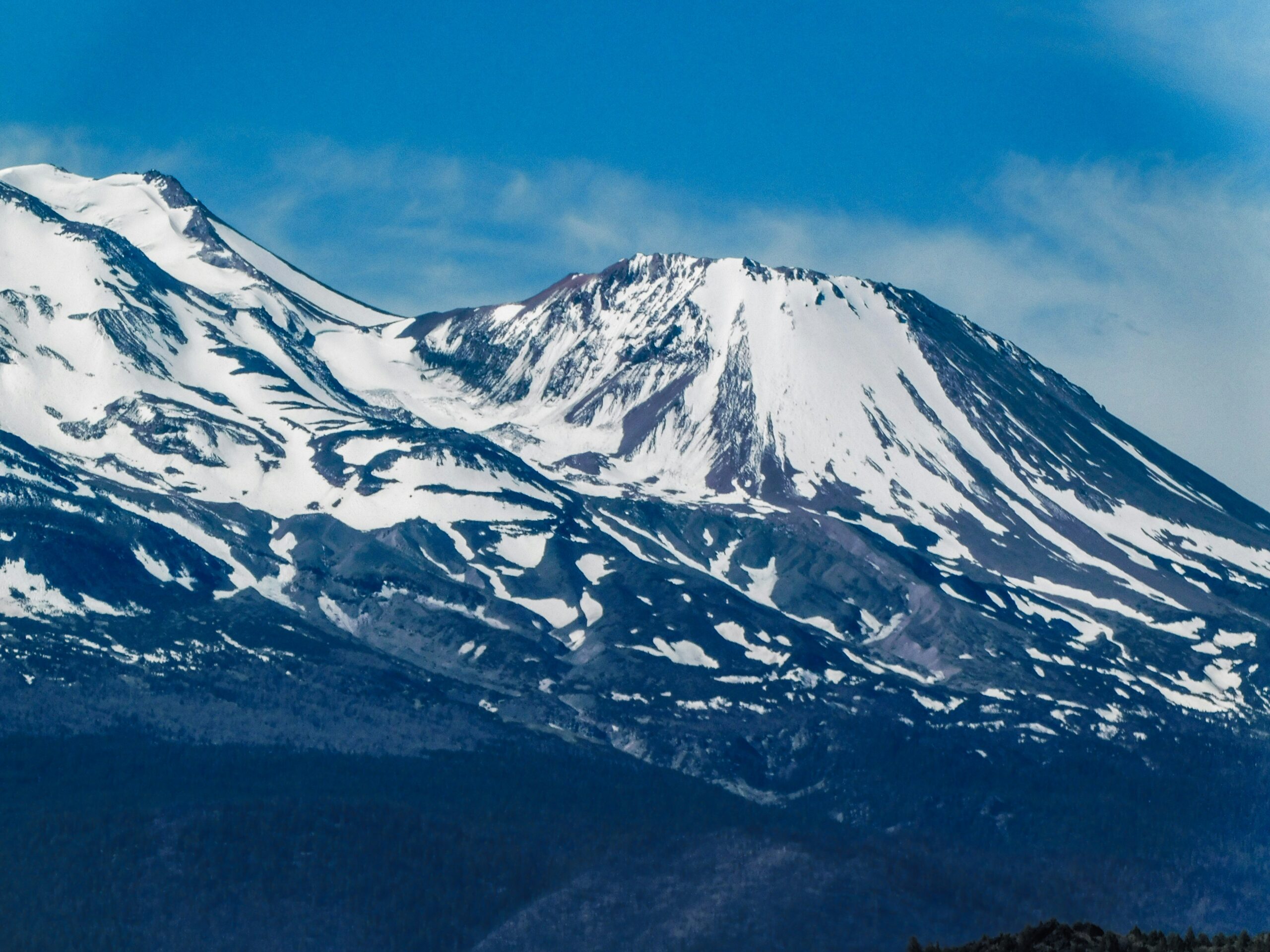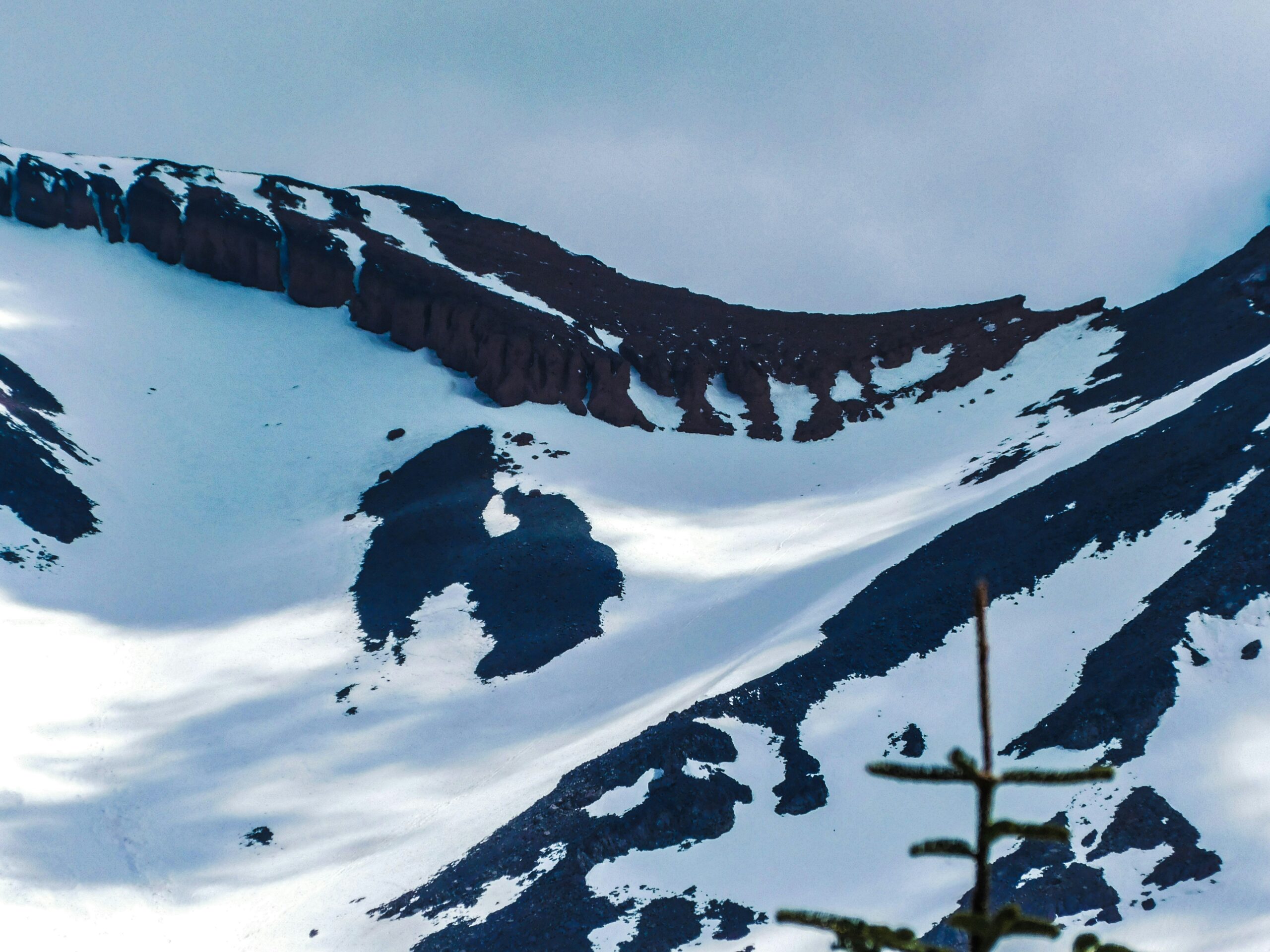Imagine standing at the foot of Mount Shasta, gazing up at its majestic snow-capped peak, and feeling that surge of excitement as you prepare to embark on a thrilling adventure. But as you take in the awe-inspiring beauty, a question lingers in your mind: how exactly do I navigate the route on Mount Shasta? Fret not, for this article is here to guide you with practical tips and insights, ensuring a safe and fulfilling journey as you conquer the challenges this magnificent mountain presents. So, lace up your boots and let's unravel the secrets of navigating the route on Mount Shasta together.

Understanding the Terrain of Mount Shasta
Mount Shasta, located in Northern California, is a majestic and awe-inspiring mountain that attracts adventurers from around the world. Before embarking on any hiking or climbing trip, it is crucial to have a good understanding of the terrain of Mount Shasta. This knowledge will not only enhance your overall experience but also prioritize safety throughout your journey.
Basic Geography of Mount Shasta
Mount Shasta is a stratovolcano, standing at an impressive height of 14,179 feet (4,322 meters). It is the second-highest peak in the Cascade Range and the fifth highest in California. The mountain is known for its massive size and stunning beauty, with its iconic snow-capped peak visible from miles away.
Recognizing Unique Landmarks
Mount Shasta is adorned with fascinating landmarks that add to the allure of the mountain. Some of the notable features include the Hotlum Bolam Ridge, Whitney Glacier, and Sentinel Rock. These landmarks serve as important reference points, making it easier to navigate the routes and understand your progress on the mountain.
Familiarizing Oneself with the Mountain's Topography
Getting familiar with the topography of Mount Shasta is essential in planning a successful climb or hike. The mountain consists of various slopes, ridges, and valleys that require careful consideration while choosing your routes. Studying topographic maps, researching online resources, or consulting with experienced climbers can greatly help in understanding the intricate details of Mount Shasta's topography.
Prioritize Safety
Before setting foot on Mount Shasta, it is crucial to prioritize safety. This means being adequately prepared, both mentally and physically, for the challenges that lie ahead. Here are some key aspects to consider:
Essential Equipment for Mountaineering
Investing in the right equipment is vital for a safe and enjoyable climb. Mountaineering gear such as crampons, ice axes, helmets, and suitable footwear are indispensable on Mount Shasta. It is important to acquire the necessary equipment and ensure it is in good condition before starting your adventure.
Understanding the Risks of Hiking
Mount Shasta poses certain risks that every hiker should be aware of. Some common hazards include avalanches, crevasses, and swiftly changing weather conditions. Educating yourself on these risks and understanding how to mitigate them is crucial for a safe trip. It is advisable to take a mountaineering course or seek guidance from experienced climbers to learn about the potential dangers and how to best tackle them.
Preparing for Emergencies on the Route
Emergency preparedness is of utmost importance when venturing into the wilderness. Mount Shasta's rugged terrain can present unforeseen challenges, so it is essential to be prepared for emergencies. Carrying a well-stocked first aid kit, knowing basic rescue techniques, and having a communication plan are all vital in case of accidents or unexpected situations. It is also advisable to inform someone about your itinerary and expected return time, in case assistance is needed.
Recommended Routes
Mount Shasta offers a variety of routes for climbers of different experience levels. Here are some key considerations when choosing your route:
Understanding the Various Routes up Mount Shasta
Mount Shasta presents multiple routes to its summit, each with its own level of difficulty and unique characteristics. Some popular routes include the Avalanche Gulch, Casaval Ridge, and the Hotlum-Bolam Ridge. Researching and understanding the routes beforehand will help you determine which one best suits your skillset and preferences.
Choosing the Right Route Based on Experience Level
Selecting a route appropriate for your level of experience is vital for a safe and enjoyable climb. Novice climbers are advised to start with more straightforward routes such as Avalanche Gulch, which offers a relatively less technical ascent. More experienced climbers can explore challenging routes like Casaval Ridge, requiring advanced technical skills.
Highlighting Popular Routes for Climbing
Among the various routes, Avalanche Gulch stands out as the most commonly climbed on Mount Shasta. It provides a rewarding experience for both beginners and seasoned climbers. Casaval Ridge, on the other hand, offers a more technical and demanding ascent, making it popular among experienced mountaineers seeking a challenge. Other notable routes include the Whitney Glacier and the Hotlum-Bolam Ridge, each offering its own unique allure.
Weather and Best Climbing Seasons
Understanding the impact of weather on climbing Mount Shasta is essential for a safe and successful ascent. Consider the following factors when planning your trip:
Understanding the Impact of Weather on Climbing
Weather conditions on Mount Shasta can change rapidly and significantly impact your climb. It is crucial to monitor weather forecasts and be prepared for sudden shifts in temperature, wind patterns, and precipitation. Unfavorable weather can make climbing dangerous, so it is essential to exercise caution and adjust your plans accordingly.
Knowing the Best Seasons for Climbing Mount Shasta
While Mount Shasta can be climbed year-round, the best seasons for climbing typically fall between May and October. During this period, the weather is generally more stable, and the snowpack on the mountain is more suitable for climbing. However, even during these favorable months, sudden weather changes are still possible, so it is essential to stay vigilant.
Preparing for Seasonal Challenges
Each season on Mount Shasta presents its own unique challenges. Winter climbers will face extreme cold, heavy snowfall, and potentially dangerous conditions. Spring brings melting snow and increased risk of avalanches. Summer offers more favorable weather but increased rockfall hazards. Fall brings colder temperatures and the increased possibility of freezing conditions. Understanding these seasonal challenges will help you plan accordingly and make informed decisions when tackling the mountain.

Getting Physically Prepared
Mount Shasta demands physical fitness and endurance. Prior to your climb, consider the following:
Training Recommendations Before the Climb
Preparing your body for the physical demands of climbing Mount Shasta is essential. Engage in regular cardiovascular exercises such as hiking, running, or cycling to build endurance. Additionally, incorporate strength training exercises that target your leg muscles, core, and upper body strength. Aim to gradually increase your training intensity and duration to simulate the physical challenges you will encounter on the mountain.
Tips for Maintaining Stamina During the Climb
During the climb, it is important to pace yourself and manage your stamina effectively. Take regular breaks to rest and refuel, staying adequately hydrated and nourished. Remember to listen to your body and adjust your pace accordingly. Proper breathing techniques can also help conserve energy and enhance your overall stamina.
Understanding the Toll of Altitude Sickness
Altitude sickness is a significant concern when climbing Mount Shasta. As you ascend, the air becomes thinner, and your body may struggle to acclimatize to the altitude. It is important to be aware of the symptoms of altitude sickness, such as headaches, dizziness, and nausea. Give yourself ample time to acclimatize, stay hydrated, and consider using medication or supplemental oxygen if necessary. If symptoms worsen, it is crucial to descend to lower elevations immediately.
Respecting the Environment
When exploring the natural beauty of Mount Shasta, it is imperative to respect and preserve the environment. Consider the following:
Understanding the Local Flora and Fauna
Mount Shasta is home to a diverse range of flora and fauna. Take the time to familiarize yourself with the local plants and animals you may encounter along your journey. Respect their natural habitats and observe from a distance to avoid disturbing their ecosystem.
Importance of Maintaining a Clean Environment
Leave no trace is a fundamental principle of responsible outdoor exploration. Pack out all your trash and dispose of it properly. Minimize your impact on the environment by refraining from littering, respecting wildlife, and avoiding damaging plants or natural features. By leaving the mountain as you found it, you contribute to the preservation of its pristine beauty for future generations.
Adhering to Park Regulations
Mount Shasta is protected land, and it is essential to abide by park regulations. Familiarize yourself with any permits or guidelines required for camping, hiking, or climbing on the mountain. Ensuring compliance with these regulations will help preserve the natural integrity of Mount Shasta and maintain a positive relationship between climbers and the environment.

Using a Guide
For those who prefer guidance and expertise throughout their Mount Shasta experience, employing the services of a guide can bring numerous benefits:
Benefits of Using a Guide
A guide provides valuable knowledge, experience, and support on your Mount Shasta journey. They can assist with route navigation, offer technical expertise, and provide guidance in managing potential hazards. Having a guide reduces the risk of getting lost or encountering difficulties beyond your skill level, giving you peace of mind and enhancing your overall safety.
Choosing the Right Guide for Your Needs
When selecting a guide, consider their qualifications, experience, and reputation. Look for guides who are certified by recognized mountaineering organizations and have extensive experience on Mount Shasta. Read reviews or speak to previous clients to ensure they are a good fit for your specific goals and skill level.
Understanding the Cost Factor of a Guide
While employing the services of a guide incurs additional costs, it is crucial to consider the value they bring to your trip. The cost typically includes their expertise, equipment, and logistical support. Assess your budget and evaluate the benefits of having a guide to determine if it aligns with your needs and preferences.
Navigation Tools and Techniques
Proper navigation is essential for a successful climb on Mount Shasta. Here are some tools and techniques to assist you:
Using Maps and Compass for Navigation
Carrying a detailed topographic map of Mount Shasta, along with a compass, is vital for accurate navigation. Familiarize yourself with map reading techniques, such as identifying contour lines and understanding key symbols. Combine map reading with compass bearings to determine your direction and progress along the route.
Benefits of GPS Devices
Global Positioning System (GPS) devices can be valuable tools for navigation on Mount Shasta. They provide real-time positioning and accurate elevation readings, allowing you to track your progress more precisely. However, it is important to have backup navigation methods in case of device failure or battery depletion.
Understanding Topographic Maps
Topographic maps provide valuable information about the geography of Mount Shasta, including elevation, terrain features, and landmarks. Familiarize yourself with reading contour lines, which represent changes in elevation, and use them to evaluate the steepness of slopes or identify potential obstacles along your route. Understanding topographic maps will greatly enhance your navigation skills and overall safety.
Campsites and Accommodation
When planning an overnight trek on Mount Shasta, it is important to consider campsite regulations and choose appropriate accommodation. Here are some factors to keep in mind:
Understanding the Regulations of Camping on Mount Shasta
Camping on Mount Shasta requires compliance with specific regulations to protect the environment and ensure the safety of climbers. Familiarize yourself with these regulations, such as designated camping areas, permits, and limitations on group size. Respecting these guidelines contributes to the preservation of the mountain and a positive experience for all visitors.
Choosing the Right Campsites
Mount Shasta offers various designated campsites for overnight stays. Consider the proximity to your chosen route, availability of facilities, and the overall suitability of the site for your needs. Research camping options in advance and make reservations if necessary, as popular sites tend to fill up quickly during peak climbing seasons.
Preparing for Overnight Treks
When planning an overnight trek, ensure you have the necessary gear and provisions for camping. This includes a suitable tent, sleeping bag, cooking equipment, and food supplies. Take into account the potential challenges of camping at high elevations, such as colder temperatures and limited water sources. Proper planning and preparation will ensure a comfortable and safe camping experience on Mount Shasta.
Nourishment & Hydration
Maintaining proper nourishment and hydration is critical for a successful climb on Mount Shasta. Consider the following guidelines:
Understanding the Importance of Hydrating During the Hike
Staying hydrated is essential when exerting physical effort at high altitudes. Mount Shasta's dry air and exertion can quickly lead to dehydration, resulting in decreased performance and potential health risks. Drink plenty of water throughout your ascent, aiming for at least 2-3 liters per day. Also, consider hydrating with electrolyte-rich sports drinks to replenish essential minerals lost through perspiration.
Suggested Food and Beverages for the Hike
Fuel your body with a balanced diet of nutritious food to sustain energy levels during the climb. Pack high-energy snacks such as granola bars, trail mix, and dried fruits. Carry lightweight, easy-to-prepare meals that provide sufficient calories to meet the increased demands of mountaineering. Consider consulting a nutritionist or experienced climbers for personalized dietary recommendations based on your specific needs and preferences.
Managing Food and Waste on the Trail
Responsible waste management is crucial for preserving the natural beauty of Mount Shasta. Pack all your food in resealable containers to prevent attracting animals and causing litter. Carry a trash bag to collect any waste and dispose of it properly when you reach designated trash bins. Leave no trace by leaving the mountain as you found it, ensuring a clean and pristine environment for future climbers.
Navigating the route on Mount Shasta can be an exhilarating and rewarding experience. By understanding the terrain, prioritizing safety, selecting the right routes, preparing physically, respecting the environment, and utilizing proper navigation tools and techniques, you can embark on a successful climb. Whether you choose to venture alone or enlist the help of a guide, Mount Shasta offers a majestic and unforgettable journey for all outdoor enthusiasts. So lace up your boots, pack your gear, and get ready to conquer the heights of this magnificent mountain.
